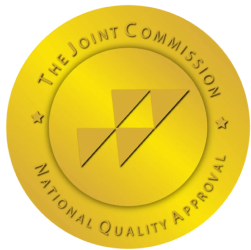Polysubstance abuse occurs when someone abuses more than one substance at a time. The substance abuse can occur simultaneously or at different times. A person can take two substances at the same time to produce an additive or synergistic euphoric effect or a person can take one substance after the first in order to counteract and alleviate the effect of the first substance. One common example of polysubstance abuse is “speedballing”, where heroin and cocaine are taken together for an enhanced effect. Another example is the opposite, where an individual takes substances such as alcohol, opioids or benzodiazepines to alleviate the effects of a cocaine “crash”. While the combination of certain substances can enhance desired effects of other drugs or medications, polysubstance abuse can also enhance the negative effects of a drug, leading to potential for adverse reactions and risk of overdose.
Predisposition to Polysubstance Abuse
There may be a variety of reasons leading to polysubstance abuse. One common factor is genetic predisposition where a parent or family member has a history of substance use disorder. Social factors may play a role in combination with genetics as well, where a person is exposed to multiple substances or drugs at an early age, leading them to want to replicate the high that they experienced. Finally, some people have underlying mental health conditions that may lead them to use multiple substances at the same time in order to self medicate.
Signs and Symptoms of Polysubstance Abuse
Many of the signs and symptoms of polysubstance abuse are similar to that of addiction to one substance or alcohol. Often the person has exhibited:
- A loss of control of using the drug and demonstrates an inability to stop using, even when they have resolved to stop
- Withdrawal symptoms when they are not using the medications or drugs
- Increased time thinking about using or buying drugs and alcohol, or spending more time being under the influence
- Disinterest in other activities that are not related to drug use
- Continued use despite knowledge of the harm that it is doing to them physically and emotionally, as well as repeated encouragement to stop by friends and family
In order to be considered polysubstance abuse, the individual abuses the drugs due to their effects but the particular drug is not as important as it is when a person is addicted to the specific drug.
Commonly Abused Drug Combinations
There are infinite combinations of different substances that a person can take, however some of the more commonly occurring substance combinations that have been diagnosed and treated are:
- Alcohol and Adderall
- Alcohol and Ambien
- Alcohol and Ativan
- Alcohol and Marijuana
- Alcohol and oxycodone
- Alcohol and Tramadol
- Alcohol and Ecstasy
- Alcohol and Xanax
- Opioids and benzodiazepines
- Steroids and cocaine
- Suboxone and Adderall
- Klonopin and Xanax
- Methadone and heroin
Combining alcohol and prescription drugs can lead to blackouts, slowed respiration, alcohol poisoning or death due to higher blood alcohol content. Combinations of different illicit substances can increase the risk for other medical complications, overdose and death.
Risks Associated With Polysubstance Abuse
The different risks and effects related to polysubstance abuse can vary depending on the combination of medications, drugs and alcohol that is consumed, however there are some general risks associated with polysubstance abuse, including:
- Overdose is always a risk when people use multiple substances and naloxone, an antidote to opioid overdose, may not be as effective if there are other medications or substances in a person’s system. Polysubstance use is particularly dangerous because of the growing clinical evidence of fatal and nonfatal overdoses related to polysubstance abuse.
- Increased risk of side effects of each of the drugs since there is a potential for an additive effect when the substances are consumed simultaneously or before the first substance is metabolized by the body.
- Acute diseases or health issues such as hepatitis C or increased risk of heart attacks can occur when there are increased blood concentrations of certain drug metabolites
- Complications due to other co-occurring mental health issues, which can be worsened when a person engages in abuse of one or more substances and can make certain symptoms worse.
Addiction Treatment in California
Withdrawal from multiple substances is more complicated and potentially more dangerous, and should be conducted under medical supervision. This allows for constant monitoring of a patient’s vital signs and management of potential medical emergencies. Medical detox should be followed by comprehensive addiction treatment therapy tailored to the individual.
If you or a loved one is struggling with polysubstance abuse or may be in need of substance use disorder treatment, Asana Recovery can help. Contact Asana Recovery or give us a call today at 949-763-3440. Our trained professionals will walk you through the admissions process and make sure all of your questions are answered. The first step is admitting you need help and it is often the hardest. Once you take that first step, there will be a team on your side to help you be successful in your new future.





